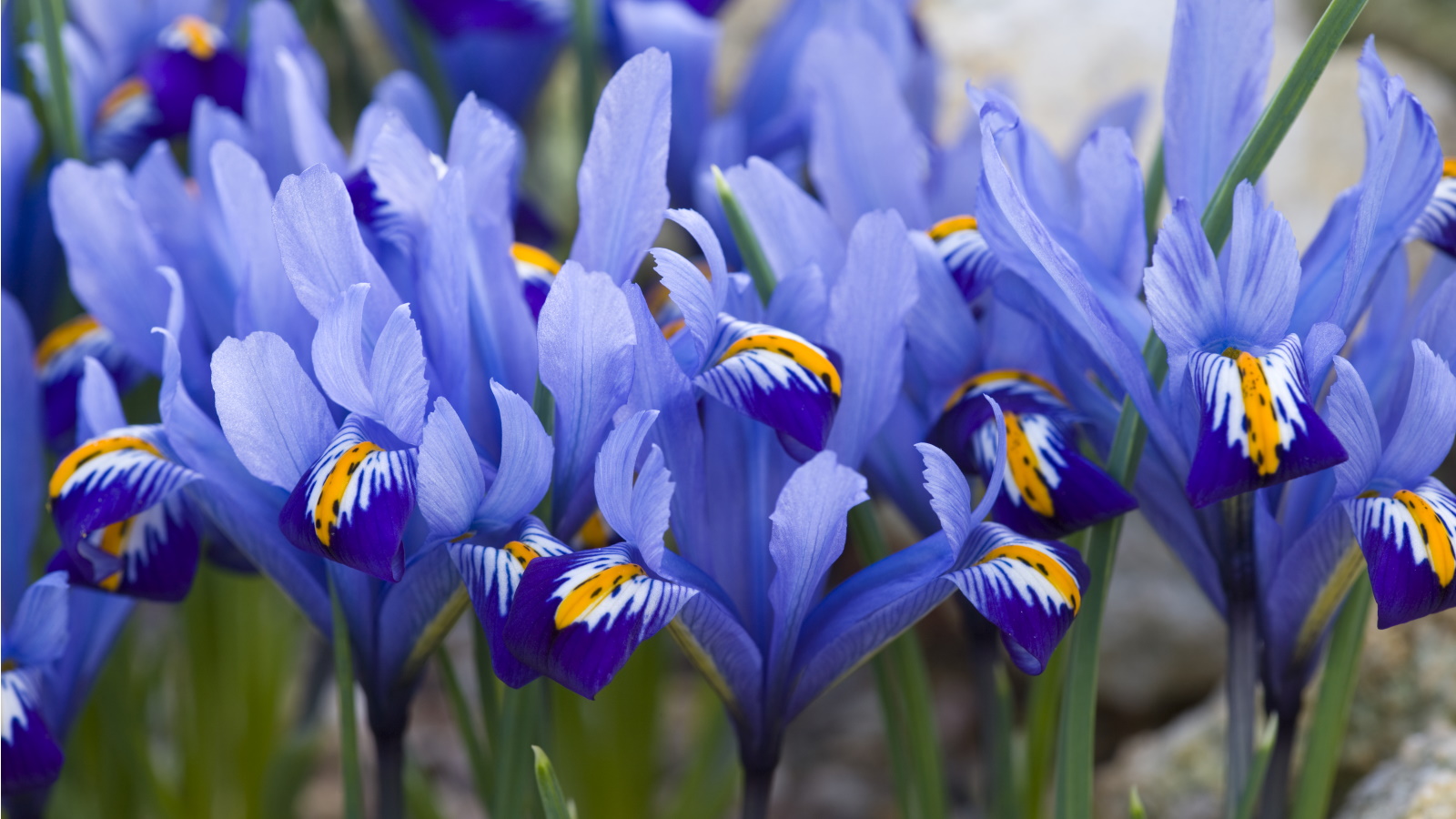
Irises are some of the most versatile flowers to grow. With an overwhelming number of varieties to choose from, there really is an iris for every backyard.
Whether you're a bearded iris fan or want a dwarf iris to plant in containers, it's important to know different irises bloom at different times. Nevertheless, when choosing which irises to plant in fall, you might want to consider some of the best non-bearded iris varieties, as well as the popular bearded classics, especially if you live in a wetter climate.
'The most common types of non-bearded iris sold to gardeners are Louisiana, Japanese, and Siberian iris,' notes Leslie Halleck, horticulture expert from Halleck Horticultural. Not sure where to get started? We've compiled a list of some of the most beautiful non-bearded iris varieties, handpicked by experts.
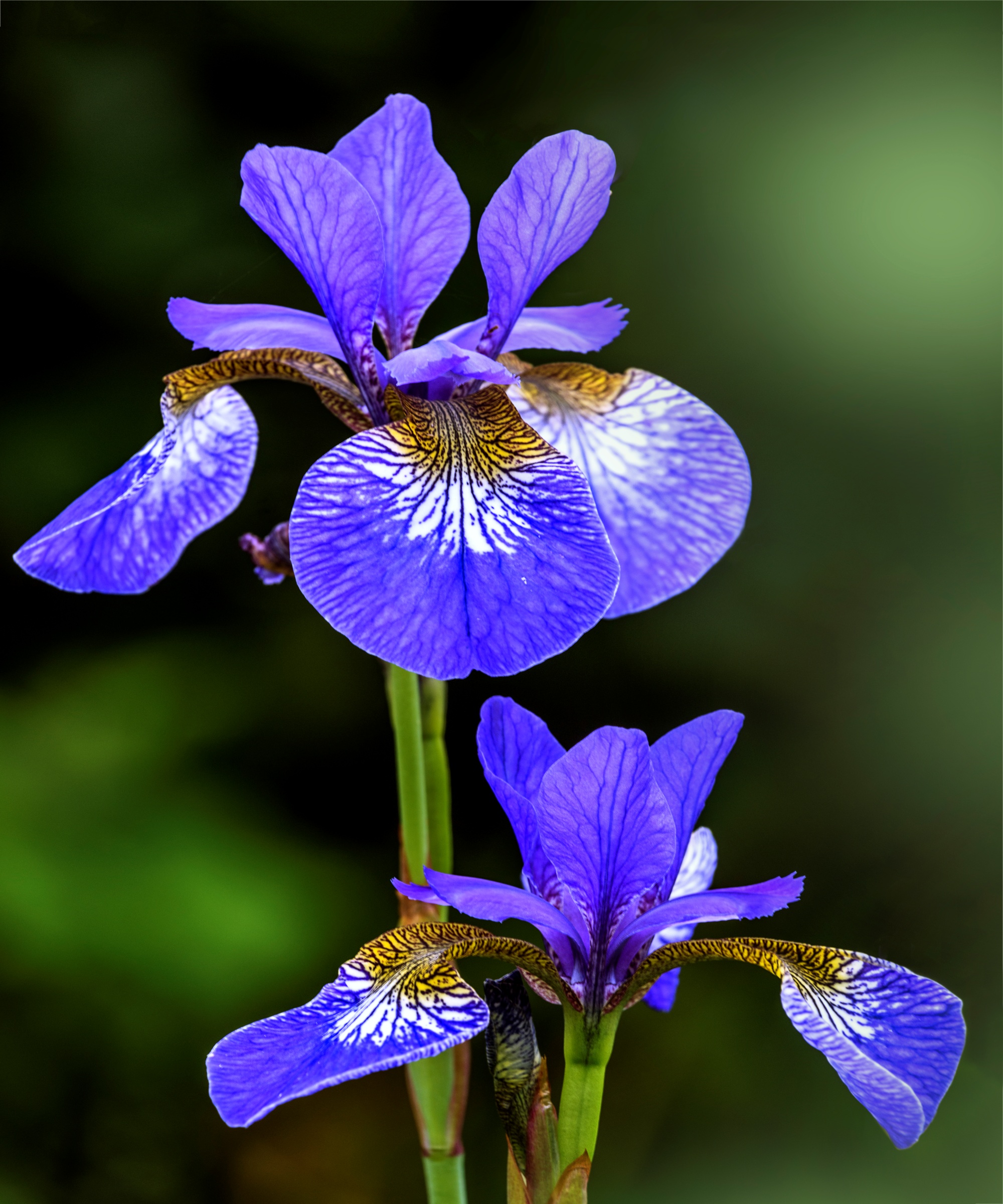
5 non-bearded iris varieties
Non-bearded irises are those that don't have hairs on their lower petals, or falls. There are a wide range of non-bearded iris varieties to choose from, all in different colors. Many of these irises are better suited to shade than bearded varieties and do best with higher moisture levels. Here are some top picks from garden experts for you to explore.
1. Rocky Mountain Iris
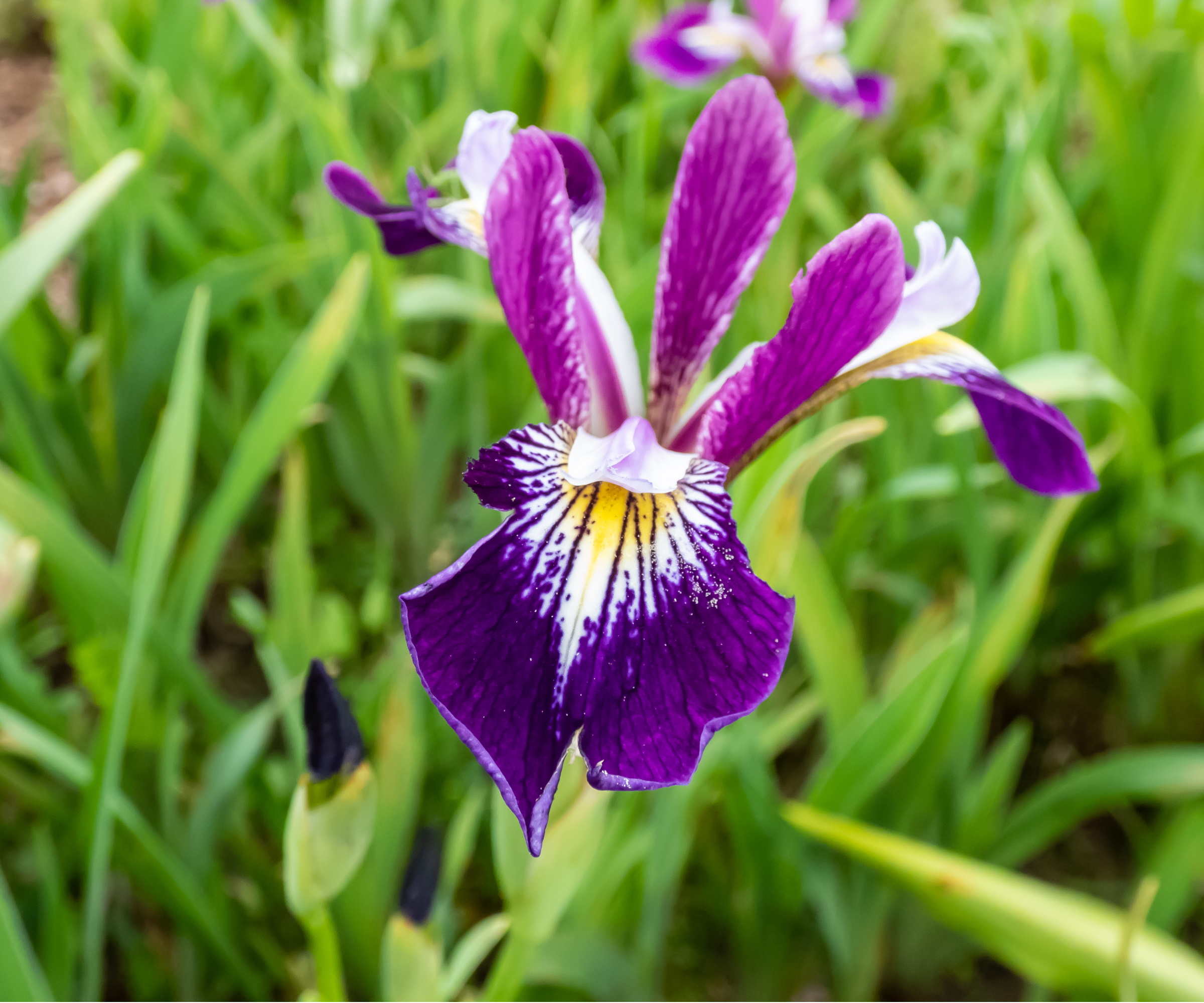
- US hardiness zone: 3-8
- Plant: Late-spring to early-summer
- Flowers: Spring
Rocky mountain iris, or Iris missouriensis, is a beautiful choice for gardeners in western US states. It blooms through the spring season, reaching up to 24 inches in height, making it a great choice for a pop of color in your spring garden.
'It's a hardy native species with light to dark blue and purple petals and sepals,' says Leslie. 'It grows across the western half of the US. in sunny to semi-shaded marshy or wet meadow environments, but you’ll also find it at higher elevations and coastal areas,' she adds.
As Leslie mentions, rocky mountain irises can grow well as shade plants and thrive in wetter environments. Bearded irises are better suited to drier climates than non-bearded varieties like this and are great for drought-tolerant planting.
'If you live in a hot climate be prepared to provide your non-bearded iris with more water and some shade from the hot afternoon sun,' says Leslie.
Grow rocky mountain irises with these rocky mountain iris seeds from Amazon.
2. Japanese Water Iris
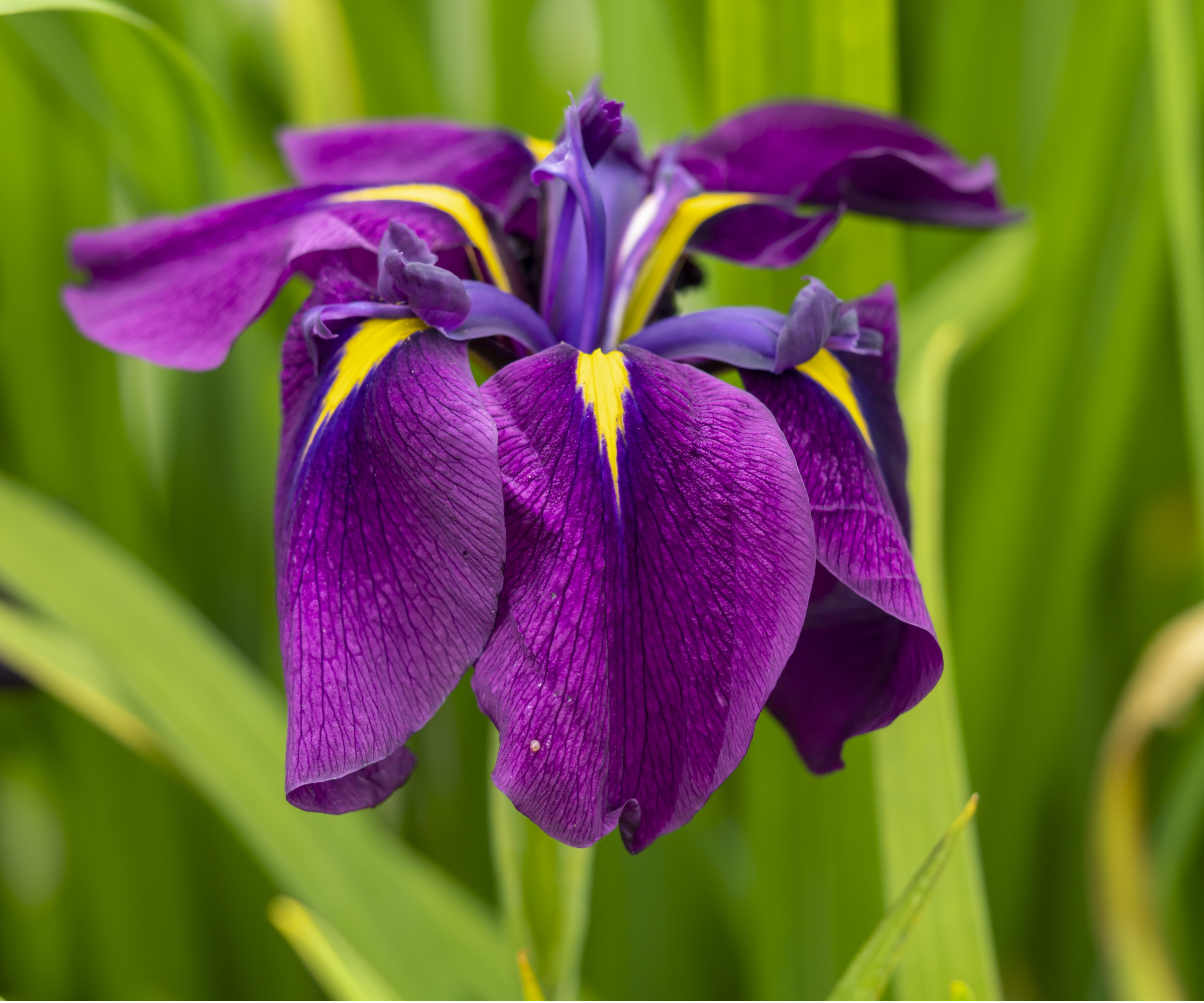
- US hardiness zone: 6-9
- Plant: Fall
- Flowers: Mid-spring to summer
Another non-bearded iris to add to your purple plants wish list, Japanese water iris, or Iris ensata, has a deep-violet color often with a striking yellow midrib.
Native to Japan, China, Korea and Russia, these irises reach an ultimate height of around 30 inches. These blooms also have dense foliage which offer greenery among its rich blooms.
These irises enjoy sunny to partial shade positions and are perfect as pond plants where they can enjoy a moist environment. As their name indicate, Japanese water iris can even be grown in water gardens, although it's recommended they are removed from this position during colder seasons when the water may freeze.
Find Japanese water iris seeds at Amazon.
3. Dwarf crested Iris
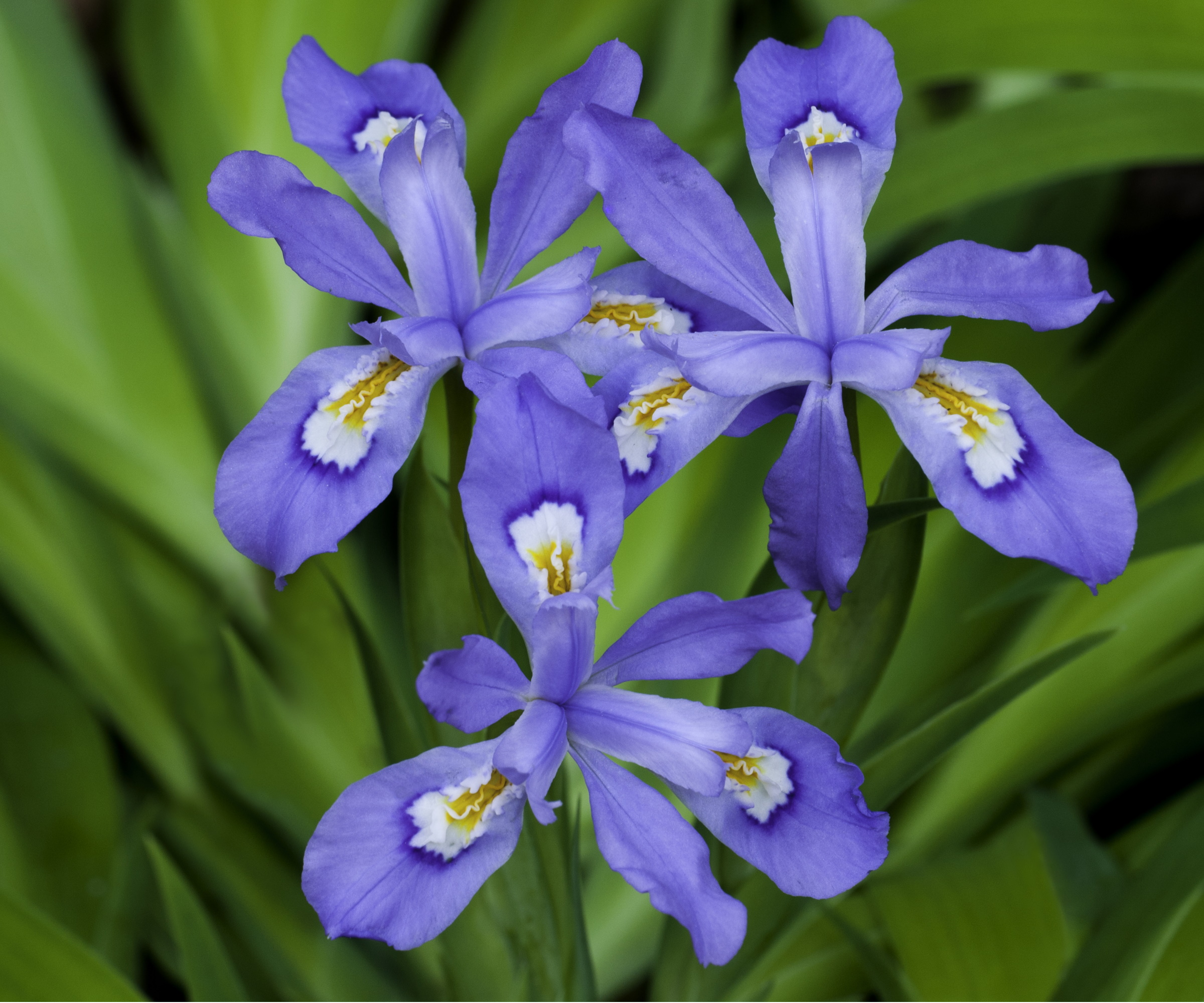
- US hardiness zone: 4-9
- Plant: Spring or fall
- Flowers: Mid-spring
For gardeners looking for a smaller non-bearded iris to grow in container gardens, consider the bright dwarf crested iris, or Iris cristata. These blooms are native to North America and only grow up to four inches tall.
'Known for its charming, intricate blooms, the crested iris is perfect for woodland gardens. It flourishes in partial to full shade and prefers a slightly acidic, well-draining soil enriched with organic matter,' says Kate Hill, flower growing expert and floral designer. 'Regular iris deadheading will help promote more blooms,' she advises.
As a low-growing plant that tolerates shade, you can even opt for dwarf crested iris as a ground cover plant for shade beneath trees in your yard, resembling their native woodland environment.
Shop for dwarf crested iris online, like at Amazon.
4. Northern Blue Flag Iris
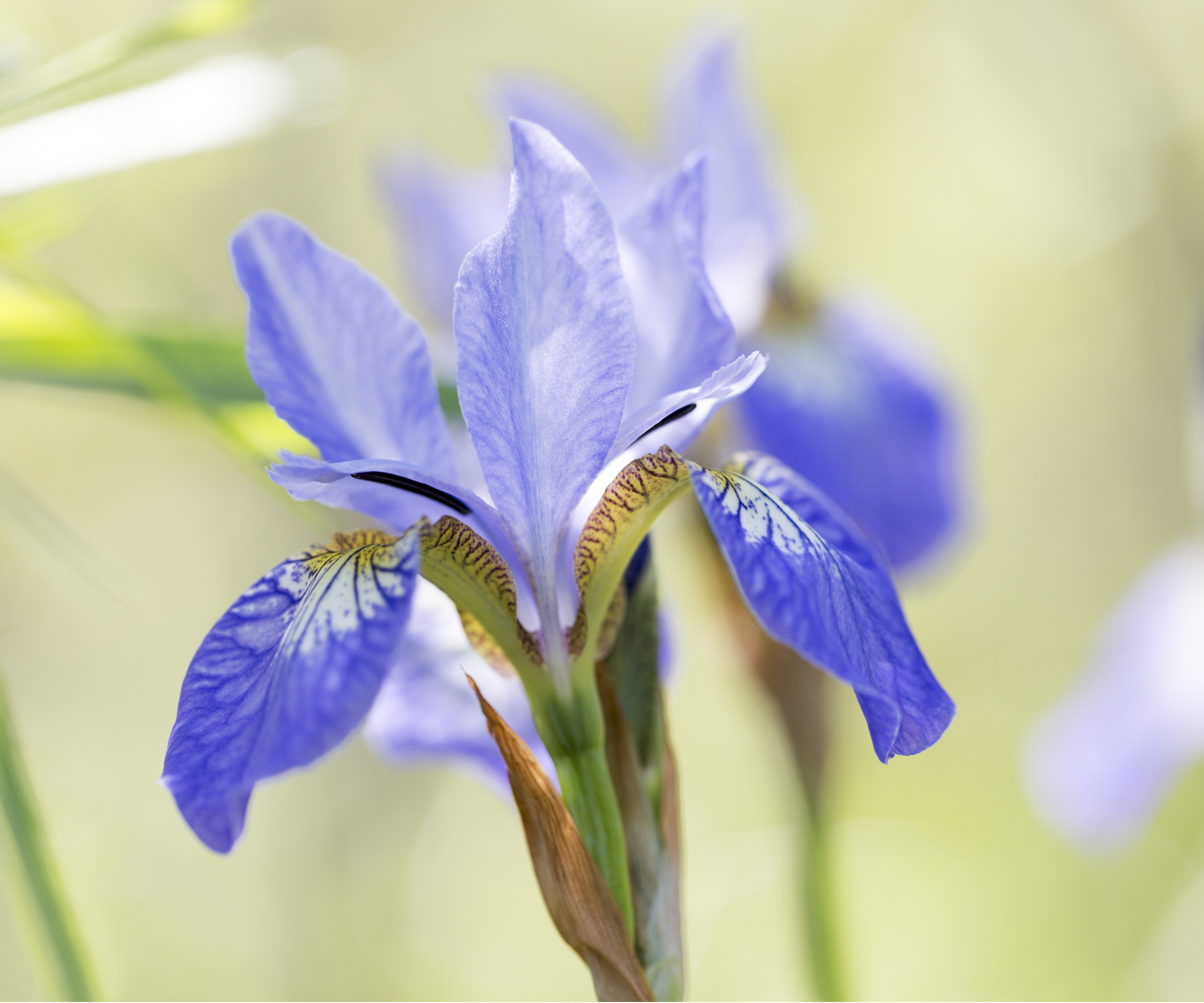
- US hardiness zone: 3-9
- Plant: Summer to mid-fall
- Flowers: Mid-spring to summer
Another option for native planting is the northern blue flag iris, or Iris versicolor. 'Northern blue flag grows in north-eastern US wetland environments,' notes Leslie.
This classic iris has narrow foliage supporting multiple blue-purple blooms, with the falls having a touch of white and yellow. Northern blue flag iris is perhaps the bloom that comes to mind when you think of non-bearded irises, as it has the timeless blue flower color.
These irises reach around 30 inches in height and can be found in wetlands and on pond margins, as they thrive in consistent moisture. It's key to know how to water your plants correctly when growing irises, as many like this will not cope with drying out.
You can also get southern blue flag iris, available at Nature Hills, which has a similar appearance but is found in south-western states.
5. Dutch Iris
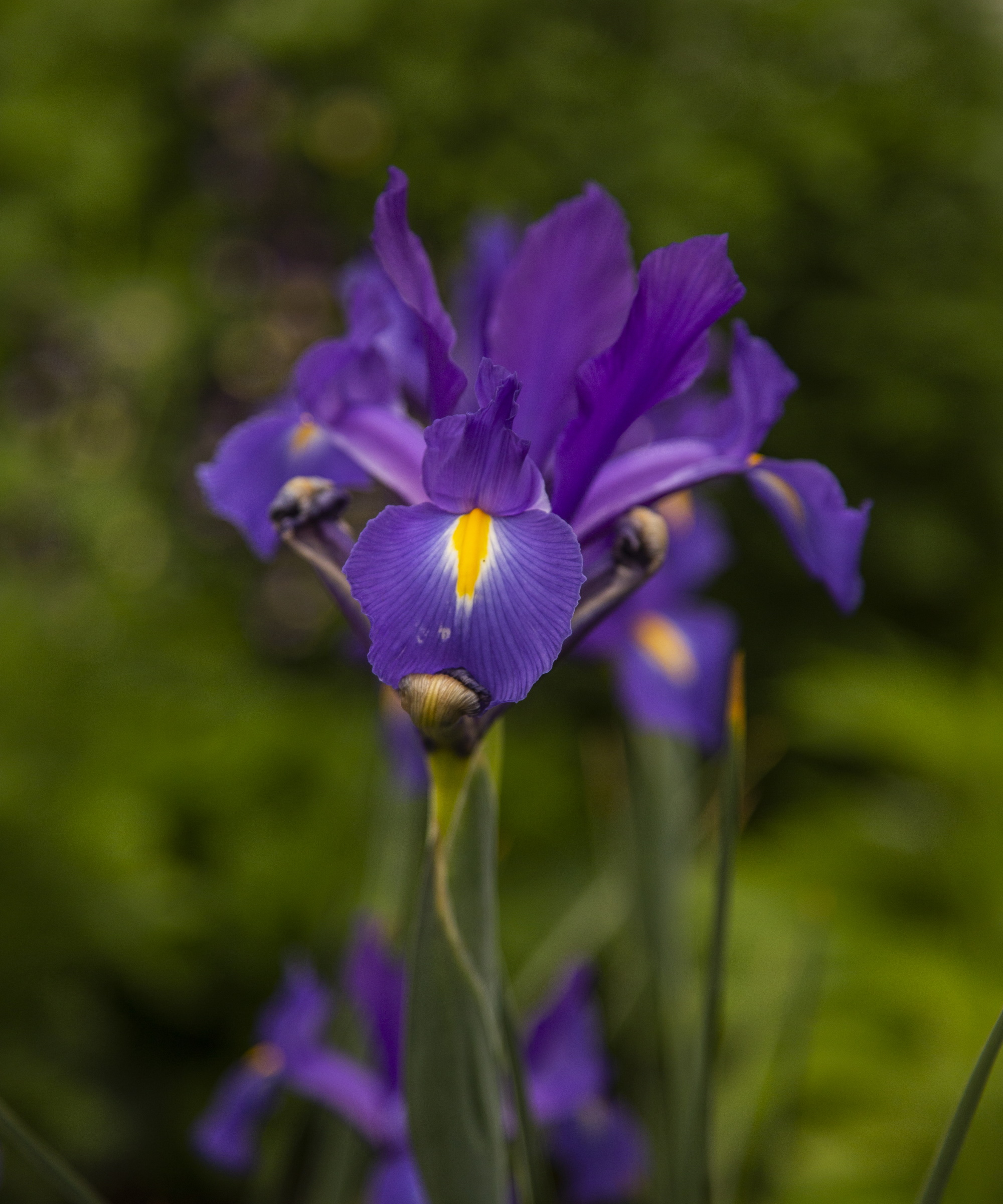
- US hardiness zone: 6-9
- Plant: Early fall
- Flowers: Late spring to summer
Many gardeners also love to grow irises as part of a cut flower garden, and arguably one of the most popular types for this purpose is the Dutch iris, or Iris × hollandica.
'They come in a multitude of beautiful colors and make excellent cut flowers,' says Leslie. 'Unlike many other non-bearded irises, these irises don't need a wet, shadier spot in your yard; rather you can plant them in standard garden borders and sunnier spots where bearded iris thrive,' she adds.
Dutch irises tend to grow up to 24 inches in height and should be kept at a consistent moisture level. You might find this moisture meter from Amazon helpful for identifying when its time to give your irises some water.
'Planting Dutch irises in early spring will yield beautiful flowers in late spring to early summer,' says Kate. 'They appreciate regular watering but should be planted where the bulbs have good drainage to prevent rot,' she adds.
Try growing these Dutch iris bulbs from Amazon in a raised bed to provide optimal drainage.
FAQs
Can all beardless irises grow in water?
While it's true non-bearded irises tend to need plenty of water to stay happy, compared to the more drought-tolerant bearded irises, not all beardless iris varieties can grow in water. There are, however, a wide range of water irises that will happily thrive in a wetland and pond environment. Some top picks include Japanese water iris and yellow flag iris.
It can be overwhelming knowing where to get started with iris varieties, and while bearded irises tend to be thought of as the showier kind, non-bearded irises can certainly shine in a flower garden, too.
Whether you're looking for blooms that enjoy a wetter environment or simply want to add a pop of color to your display, these beardless iris varieties are worth considering planting this year. You should also take some time to learn when to fertilize irises so you can encourage bigger and brighter blooms when the flowering season comes around.







